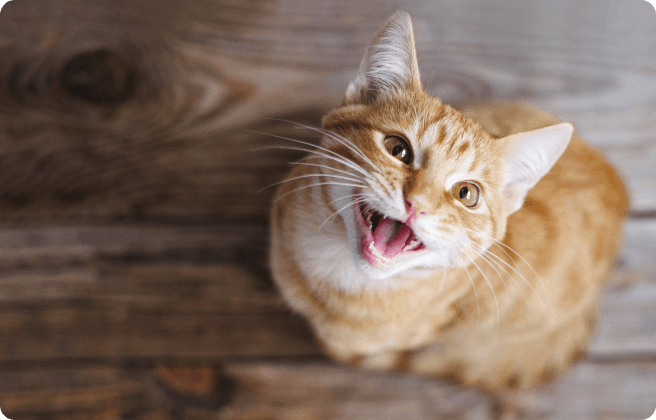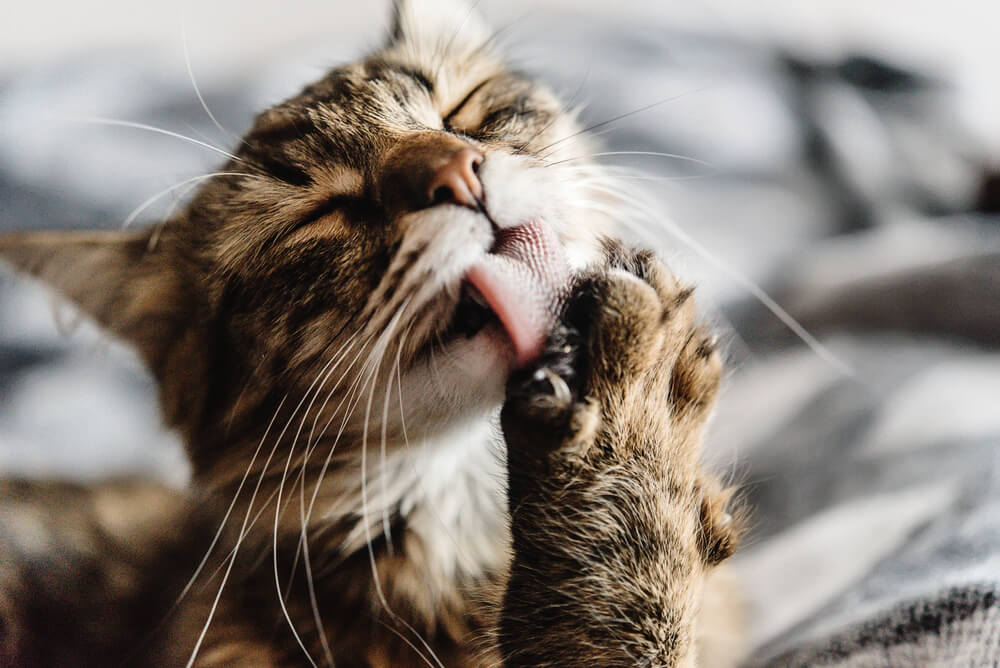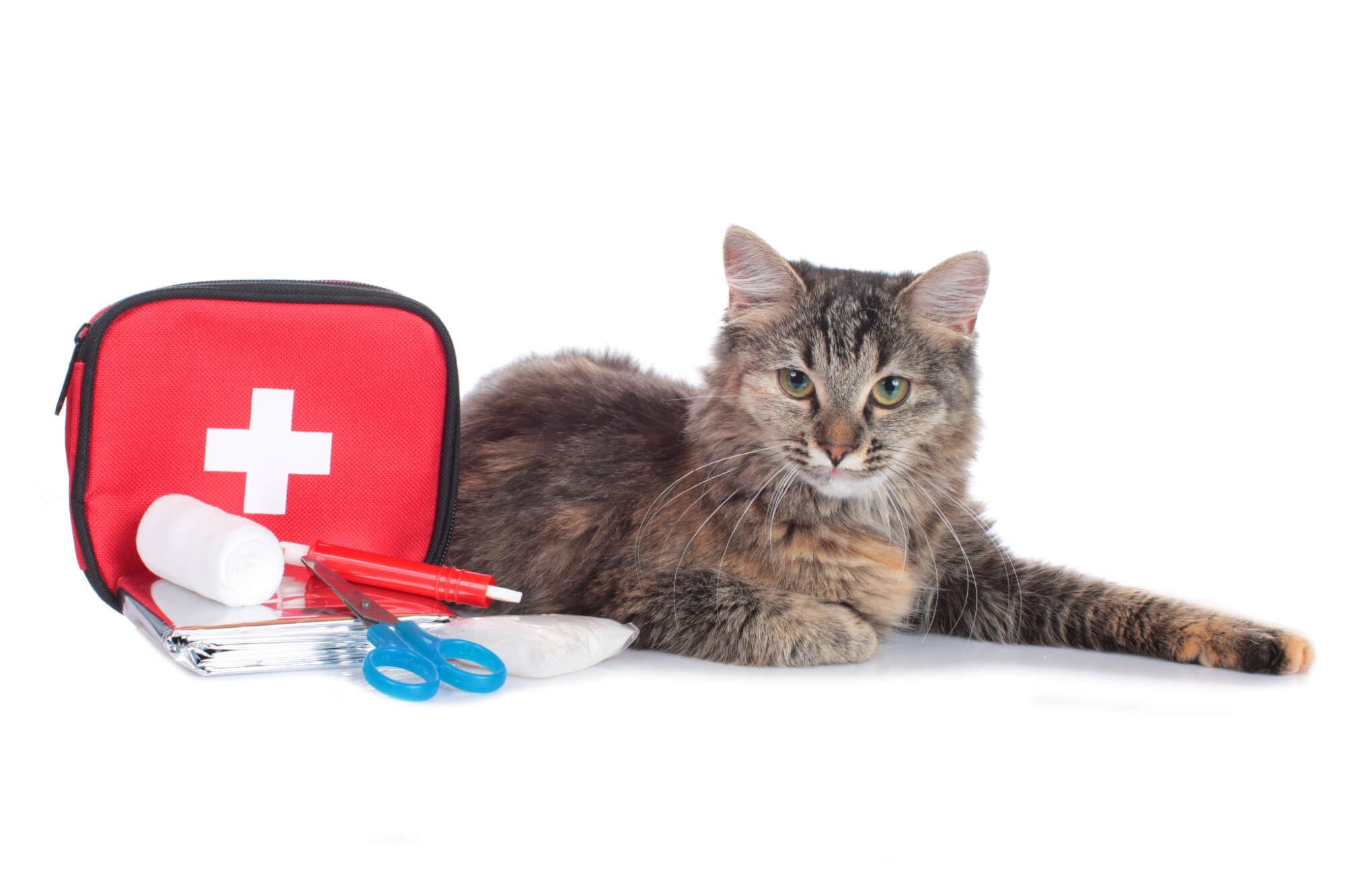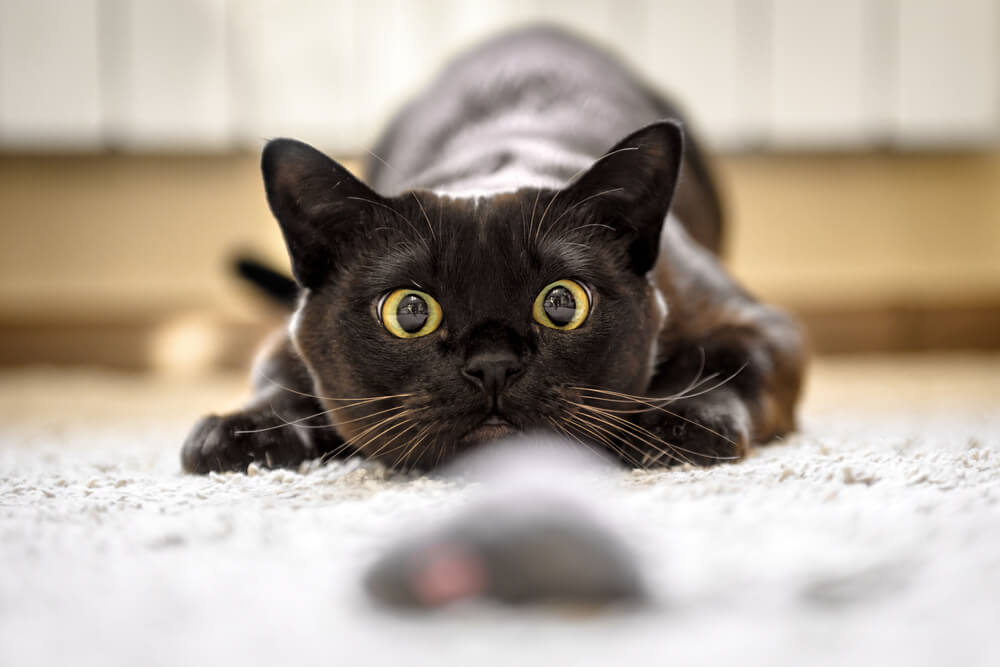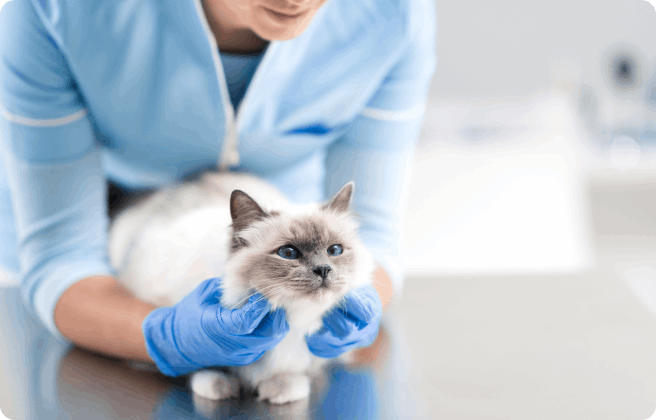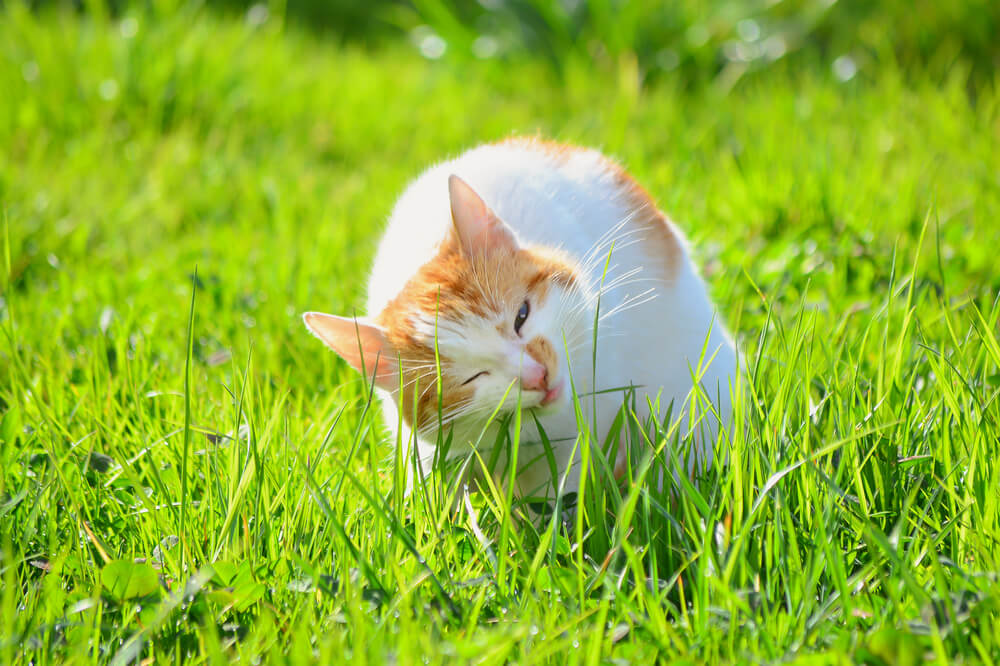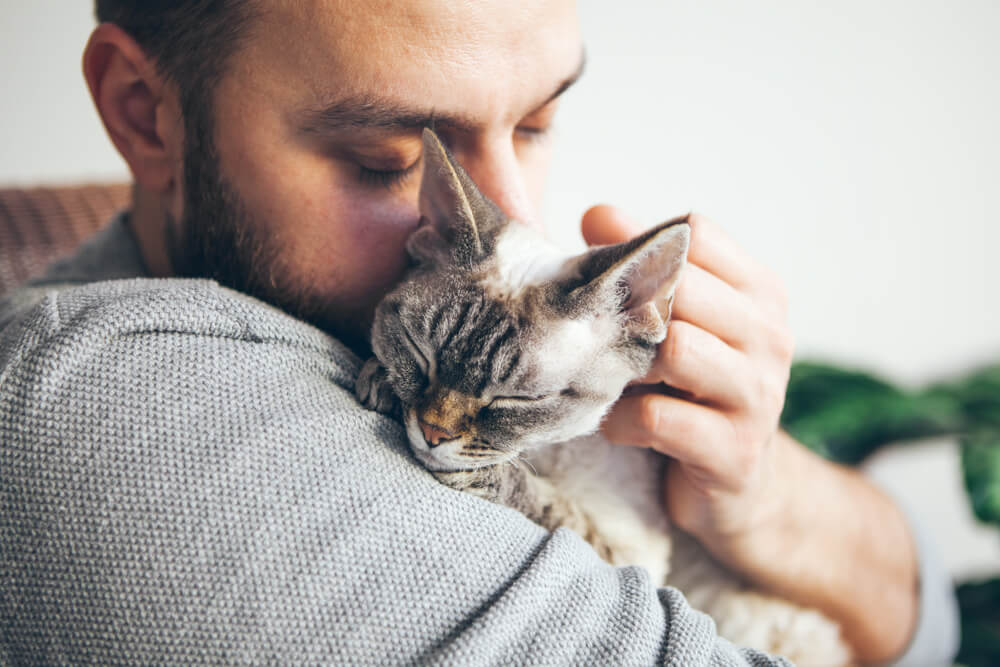
As proud cat parents, one sound we’re all fond of is our cat’s purr. It never fails to reassure you that they’re content. Happy. At peace. Or so we’ve come to believe…
It turns out that purring is not always a sign of contentment — it can sometimes signify that your cat is experiencing other emotions.
To find out more, we have the lowdown on why cats purr, and what the different types of purring might mean.
Does my cat’s purr mean they’re happy?
The first question you might be asking yourself is does it mean my cat’s happy if they’re purring?
You can usually work out if your cat is happy by looking at their accompanying body language. For example, if your cat’s eyes are half-closed, they remain still and press into your hand as you stroke them, or they stretch into the stroking and curl their tail around you, it’s safe to assume they’re relaxed and happy to be stroked. Purring produces serotonin, so like smiling for us pet parents, it makes them feel good.
But that’s not the only reason why cats purr…
Other reasons why cats purr
They might be hungry
Sometimes, if cats are feeling hungry, or even if it’s their regular mealtime and they’re happy they’re about to receive their daily meal, they may begin to purr loudly, and sometimes add an enthusiastic ‘mew’ or two.
It turns out this may be a learned, manipulative type of purr that cats use specifically to try to get you to feed them. A 2009 study by the University of Sussex found that cats can sneakily hide acoustic pleas within their purring designed to spur you on to feel sorry for them and provide them with a meal or snacks.
The scientists involved in the study claimed that cats had learned to manipulate owners by changing the frequency of their purring when hungry to appeal to humans’ nurturing instinct, showing just how clever our feline companions are.1
To soothe pain
Incredibly, studies have found that cats purr following injury to assist the healing process.
A study in the Journal of the Acoustical Society of America revealed that felines, including ocelots, pumas, and domestic cats, can control their purring frequency and loudness, and purred between 25Hz and 150Hz when injured or stressed, the exact same vibrational/electrical frequencies that are used to treat bone injuries, pain, muscle sprains, and wounds. 2
It’s thought that purring helps cats keep bones, muscles, and tendons in tip-top condition when not injured too, helping build strength and resilience when they’re resting so they’re in prime condition and health all the time.
To bond with their kitten/mother
Kittens are born blind and deaf, so the vibrations from purring help them find their mother, as well as helping their mother keep an eye on her litter. In addition, purring helps soothe and calm the new arrivals if they’re afraid or upset.
How exactly do cats purr?
Scientists are still unsure exactly of the mechanics of how cats purr, as it’s difficult to ascertain how they produce the sound while they’re making the sound. But the general consensus is that muscles in cats’ throats vibrate the vocal cords, resulting in purring when cats breathe in and out.
Not all scientists agree on this theory, however. A study in 2023 3 questioned the long-held belief in how cats purr, and put forward research that posited that cats don’t have control over their purring, and instead ‘pads’ in their vocal cords make the sound without any input from the brain following the initial signal to start purring.
It may be that more research is required before scientists discover the real reason behind how cats purr.
What does it mean if my cat purrs loudly?
In the same way human voices vary from person to person, and some are louder than others, every cat varies in the loudness of their purring.
In addition, cats learn to change the volume of their purring as they grow older and see the response their purring gets from humans. So if they’re hungry, for example, and they purr louder, it may result in their pet parent getting their meal ready more quickly. Clever, eh? Your cat may be controlling you more than you ever realized
We uphold the highest editorial standards when creating the authoritative content pet parents rely on and trust.
Every piece of clinical content on the Cat Food Advisor is reviewed by our certified Veterinary Advisory Board, which consists of licensed veterinarians and medically certified specialists.
Our reviews are completely independent; we are not paid by any pet food company to promote their products favorably. We do not accept money, gifts, samples or other incentives in exchange for special consideration. For more information see our Disclaimer & Disclosure page.




